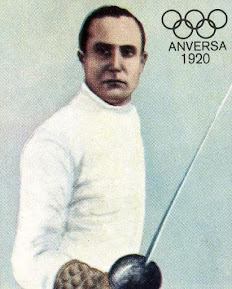Giovanni Antonio Magini – astronomer and cartographer
Scientist laboured to produce a comprehensive atlas of Italy
Giovanni Antonio Magini, who dedicated his life to producing a detailed atlas of Italy, was born on this day in 1555 in Padua. He also devised his own planetary theory consisting of 11 rotating spheres and invented calculating devices to help him work on the geometry of the sphere. Magini was born in Padua and went to study philosophy in Bologna, receiving his doctorate in 1579. He then dedicated himself to astronomy and in 1582 wrote his Ephemerides coelestium motuum, a major treatise on the subject, which was translated into Italian the following year. In 1588 Magini joined in the competition for the chair of mathematics at Bologna University and was chosen over Galileo because he was older and had more moderate views. He held the position for the rest of his life. But his greatest achievement was the preparation of Italia, or the Atlante geografico d’Italia, which was printed posthumously by Magini’s son in 1620. Although Italy as a state has existed only since 1861, the name Italia, referring to the southern part of the peninsula, may go back to the ancient Greeks. It appeared on coins thought to have been produced in the 1st century BC. Read more…
__________________________________
Saint Anthony of Padua
Pilgrims honour the saint famous for his miracles
The feast of Saint Anthony of Padua (Sant’Antonio da Padova) is celebrated today, with thousands of people visiting the northern Italian city and special services are held in the Basilica di Sant’Antonio before a statue of the saint is carried through the streets of Padua. Pilgrims from all over the world visit the Basilica, to see the saint’s tomb and relics. Anthony was born in Portugal where he became a Catholic priest and a friar of the Franciscan order. He died on 13 June, 1231 in Padova and was declared a saint by the Vatican a year after his death, which is considered a remarkably short space of time. Anthony is one of the most loved of all the saints and his name is regularly invoked by Italians to help them recover lost items. It is estimated that about five million pilgrims visit the Basilica every year in order to file past and touch the tomb of the Franciscan monk, who became famous for his miracles, particularly relating to lost people or things. The magnificent basilica in Piazza del Santo is an architectural masterpiece created between the 13th and 14th centuries, later enriched with works of art by masters such as Titian, Tiepolo and the sculptor Donatello. Read more…
____________________________________
Pope's would-be killer pardoned
Turkish gunman 'freed' but immediately detained
Carlo Azeglio Ciampi, Italy’s president, signed the order granting an official pardon to Pope John Paul II’s would-be assassin, Mehmet Ali Agca, on this day in 2000. The Turkish gunman had spent 19 years in jail after wounding the pontiff in St Peter’s Square in Rome in May 1981 but John Paul II, who had forgiven Agca from his hospital bed and visited him in prison in 1983, had been pressing the Italian government to show clemency and allow him to return to Turkey. However, at the same time as granting him his freedom under the Italian judicial system, Ciampi also signed Agca’s extradition papers at the request of the Turkish authorities, who required him to serve the outstanding nine years of a 10-year jail sentence after being convicted in his absence of the murder of a Turkish journalist in 1978. He was handed over to Turkish police, who escorted him onto a military flight to Istanbul airport on Tuesday night. At the time, a Vatican statement described the Pope as "very happy" about the pardon and said that John Paul II’s satisfaction was all the greater for the pardon being carried out during the Roman Catholic Church's Holy Year. Read more…



.jpg)

.png)
.png)


.jpg)
.jpg)
.jpg)

.jpg)
.jpg)
.jpg)
.jpg)








.jpg)
.jpg)
